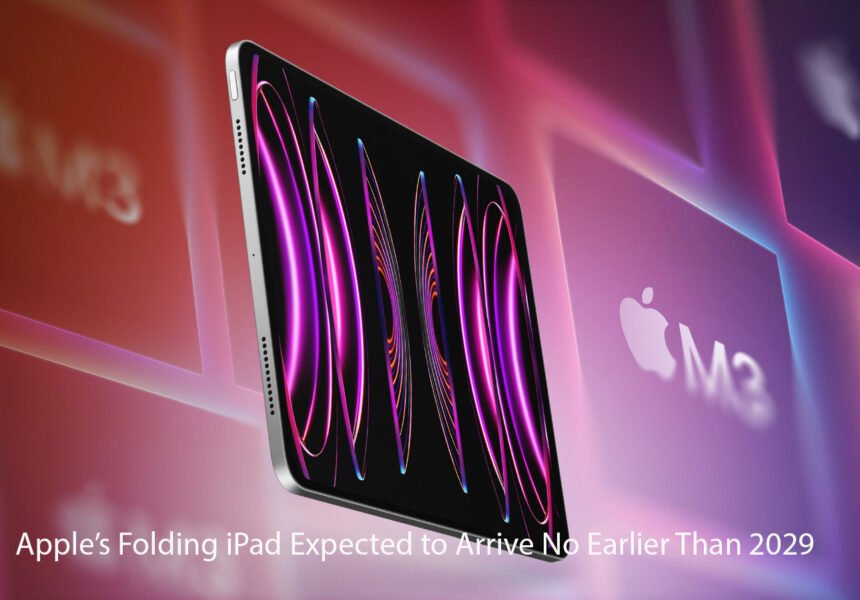Apple’s long-rumored folding iPad may not hit the market until 2029, according to reports from AppleInsider. Earlier predictions suggested a 2027 or 2028 launch, but new supply-chain information indicates that Apple has postponed its plans. The delay reportedly comes from engineering and cost challenges surrounding display durability, hinge mechanisms, and production yields.
Technical Barriers Slow Down the Project
AppleInsider reports that Apple engineers are still refining the hinge system and flexible display panel. The company is working closely with Samsung Display to develop an 18-inch foldable OLED screen, one that can bend repeatedly without showing creases or losing color accuracy. Achieving that standard has taken longer than anticipated.
Another concern is weight. Early prototypes reportedly weigh around 3.5 pounds, far heavier than a typical iPad Pro, which weighs just over one pound. The increased weight makes the device less portable and may compromise the user experience. Apple’s design team is reportedly exploring lighter materials and alternative structural components to make the device more practical for everyday use.
High Cost Could Limit Early Adoption
A key challenge lies in cost. The folding display and hinge assembly are expensive to produce, raising the expected retail price to around US $3,000. That would make the folding iPad roughly three times the cost of Apple’s current 13-inch iPad Pro. AppleInsider’s sources note that Apple has little interest in launching a product that feels like a prototype.
The company prefers to ensure a mature design before release, even if it means waiting several more years. By doing so, Apple can avoid durability issues that have plagued early foldable devices from competitors.
Focus Shifts to Foldable iPhone Development
Reports suggest Apple may have temporarily prioritized development of a foldable iPhone. The mobile device category offers a larger global market, and consumer interest in foldable smartphones remains high. That shift has apparently slowed the iPad project’s internal progress.
The decision mirrors Apple’s usual strategy: polish one product category at a time. Analysts believe the foldable iPad could re-emerge as a high-end device once the foldable iPhone has matured.
What a Foldable iPad Could Offer
Despite the delay, excitement remains strong. A foldable iPad could bridge the gap between a tablet and a MacBook, appealing to professionals, students, and creatives who need both portability and a large screen. It may support multitasking features, an external keyboard, and Apple Pencil input, making it a versatile workstation.
A forum commenter on AppleInsider summed up this sentiment well:
“A folding iPad makes more sense than a folding iPhone. It can be big enough for real work but still fold small enough to carry anywhere.”
Why Waiting Might Pay Off
Although 2029 sounds distant, Apple’s patience could pay off. The company is known for entering new product categories late but executing with precision, as seen with the Apple Watch and Vision Pro. By extending development time, Apple can refine software integration with iPadOS, improve hinge durability, and secure better yields from display suppliers.
For now, the folding iPad remains a work in progress. Apple’s commitment to quality means users may have to wait, but if history is any guide, the final result could redefine what a tablet can be.












